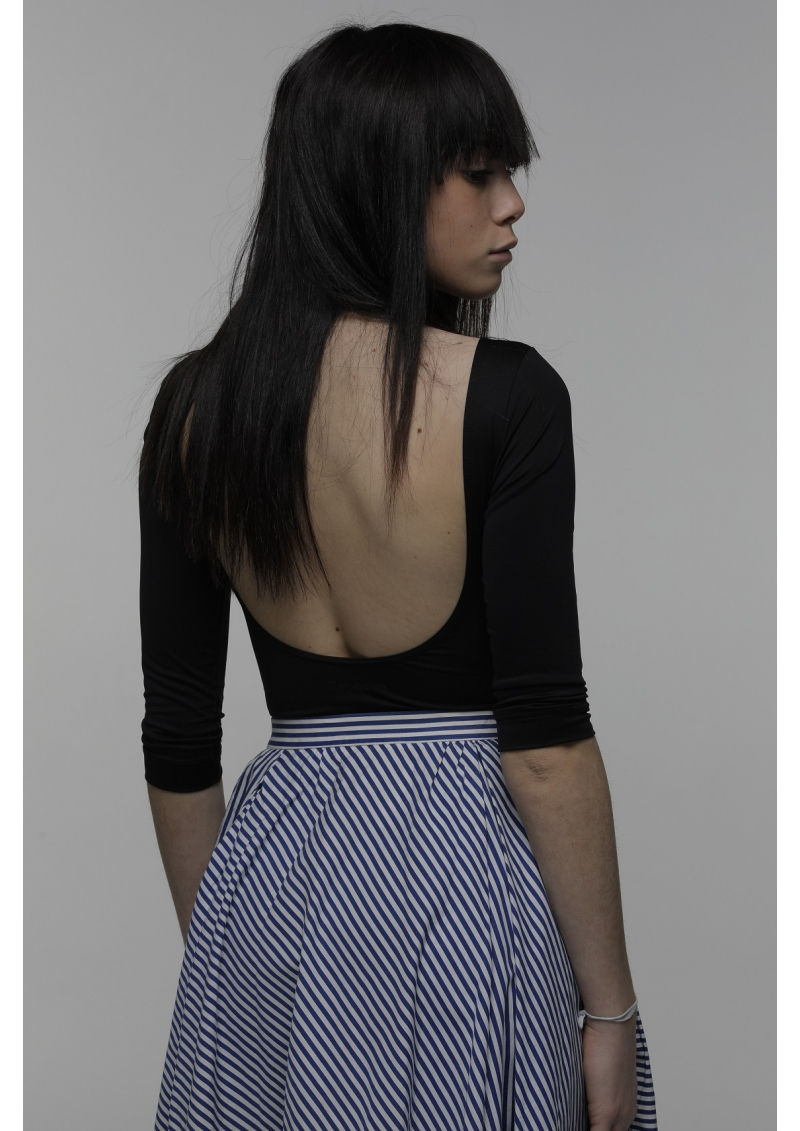







The leotard is a specific product for dancers who wish to underline their back aesthetics thanks to the large round neckline. The ¾ sleeves underline the arm bearing. The adjustable gather, allowed by an inside ribbon in satin, links femininity to comfort.

In 1947, Rose Repetto creates her first ballet shoes on the advice of her son Roland Petit, in a tiny workshop near the National Opera of Paris.
In 1956, on Brigitte Bardot's request, Rose Repetto creates the “Cendrillon” ballerina and dedicates it to her. For BB, this ballerina will always be a part of her success in Vadim's film “And God Created Woman” from 1956.
Rose Repetto opens her first boutique at 22 Rue de la Paix in Paris in 1959. It becomes the place frequented by the world's prima ballerinas: Bejart, Noureev, Barychnikov, Carolyn Carlson, the Kirov at the 'Folies Bergères', all are supplied with their dancing shoes and garments by Repetto.
With a view to expanding her company, Rose Repetto establishes a factory in Saint Medard d'Excideuil in Dordogne in 1967. Nowadays, the pointe shoes and ballerinas are still made using the famous 'stitch and return' method with the highest skill.
In the 70’s, Serge Gainsbourg got fascinated by the “Zizi”, a shoes model, created by Rose Repetto for Zizi Jeanmaire her daughter in law. He became the ambassador of the brand.
Repetto is above all the number one reference for dance equipment, especially for ballet, and the supplier of the most prestigious dancers, from top till toe.

The leotards come from the dance collection of Repetto, unique artisan in the ballet world since 1947.

88% Polyamide, 12% Elastane.
Wash inside out with similar colours. Do not iron.

| Repetto | years | 4 | 6 | 8 | 10 | 12 | 14 | 16 | 18 | 20 |
| Stature | cm | 104 | 116 | 128 | 140 | 152 | 158 | 164 | 170 | 172 |
| Chest | cm | 56 | 61 | 66 | 70 | 74 | 78 | 82 | 86 | 90 |
| Waist | cm | 53 | 55 | 57 | 59 | 61 | 65 | 68 | 70 | 72 |
| Hips | cm | 60 | 64 | 68 | 72 | 76 | 80 | 84 | 88 | 92 |
| Inside leg | cm | 46 | 53 | 60 | 65 | 70 | 73 | 75 | 77 | 79 |
| Repetto | XS | S | M | L | XL |
| France | 36 | 38 | 40 | 42 | 44 |
| UK | 8 | 10 | 12 | 14 | 16 |
| Germany | 34 | 36 | 38 | 40 | 42 |
| Stature cm | 162 | 166 | 170 | 174 | 178 |
| Bust cm | 82 | 86 | 90 | 94 | 98 |
| Waist cm | 62 | 65 | 69 | 73 | 77 |
| Hips cm | 86 | 90 | 94 | 98 | 103 |
| Inside leg cm | 74 | 76 | 78 | 80 | 82 |
The ballet leotard with ¾ sleeves, open back and low-cut front neckline. The lycra fabric gently hugs the body for easy movement.
Worn with a pair of jeans in the spring, it seems to have been taken directly from Grease or, when styled with some mini shorts, from Fame. Under a vintage ruffle mini skirt in the hot summer time or worn pretentiously under a chic jacket, the ballet leotard has everything you need, whatever the style or mood you’re in.
Have in mind that this piece was made for dancing, stretching and twirling, designed to support many hours of hard rehearsal. You have surely already come across many fashion versions, with similar looks but not the same technicity that you will find in the ballet leotard from Repetto, available permanently at De Toujours.
Young ballerinas, dreaming of the Opera, have been wearing leotards outside the dance studio for as long as we can remember. It’s almost so that you forget that it is the true ancestor of the “body”, which is reversely the derived fashion version of the leotard.
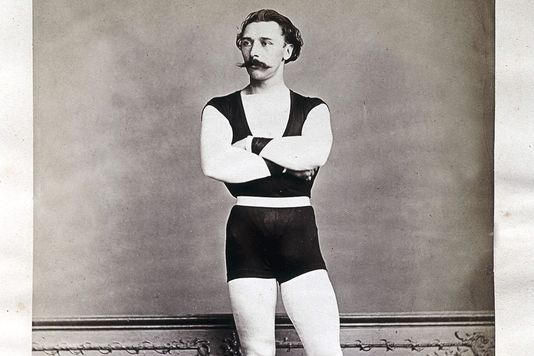
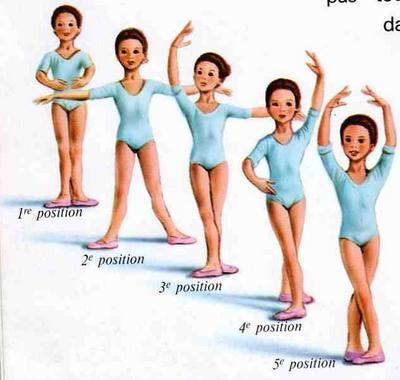
In fact, it was Jules Léotard, a famous acrobat from Toulouse, who first invented the leotard in the mid-19th century. Supposed to serve as a second skin, this bodysuit was made as to not interfere with or hinder movements during dangerous performances. Léotard was a pioneer of his time and the trend soon crossed the Atlantic where the cabaret entertainment was very popular.
The classical dance, with similar physical exigences as those of acrobatics, quickly turned the leotard into its proper uniform and was adopted by ballet institutions world-wide. The success of the leotard was immediate and is permanent.
Bettie Page, pin-up and model, was first to give the leotard an erotic connotation in the 50’s, giving it a place outside a pure sports context, and Hugh Hefner’s Playboy Bunnies quickly followed her lead - adding bunny ears and tails.
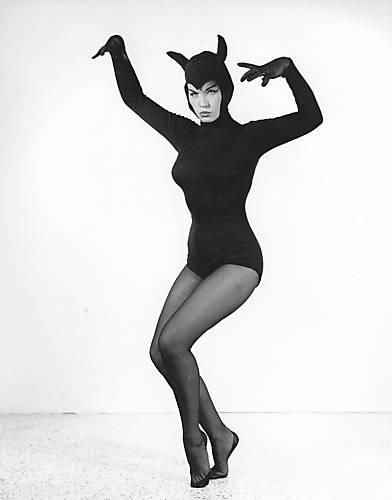
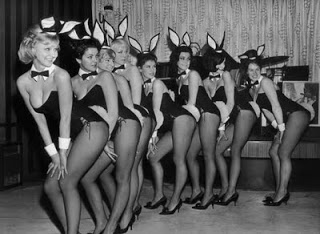
Twenty years or so later, Kari-Ann Muller imposed the 80’s style, posing on the first record cover of Roxy Music, wearing a pastel leotard with ruffles.
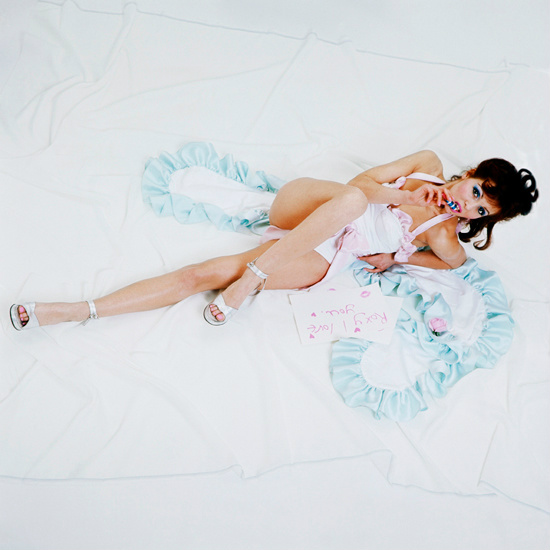
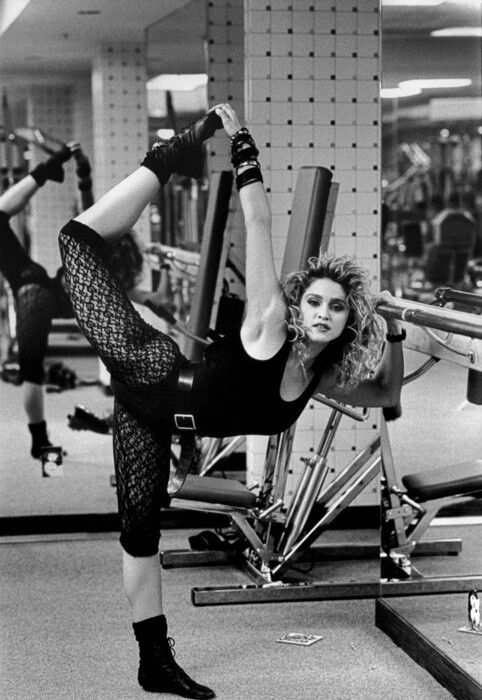
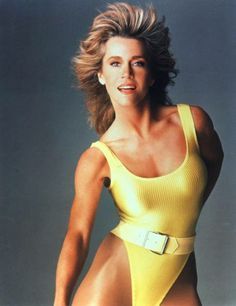
The source of the leotard was resuscitated in the heat of aerobics by Jennifer Beals in Flashdance and Jane Fonda, Queen of aerobics, which set the tone for the general public who gladly started to wear the leotard in the city, with a pair of jeans, under a chic suit, or beneath a big fur during winter.
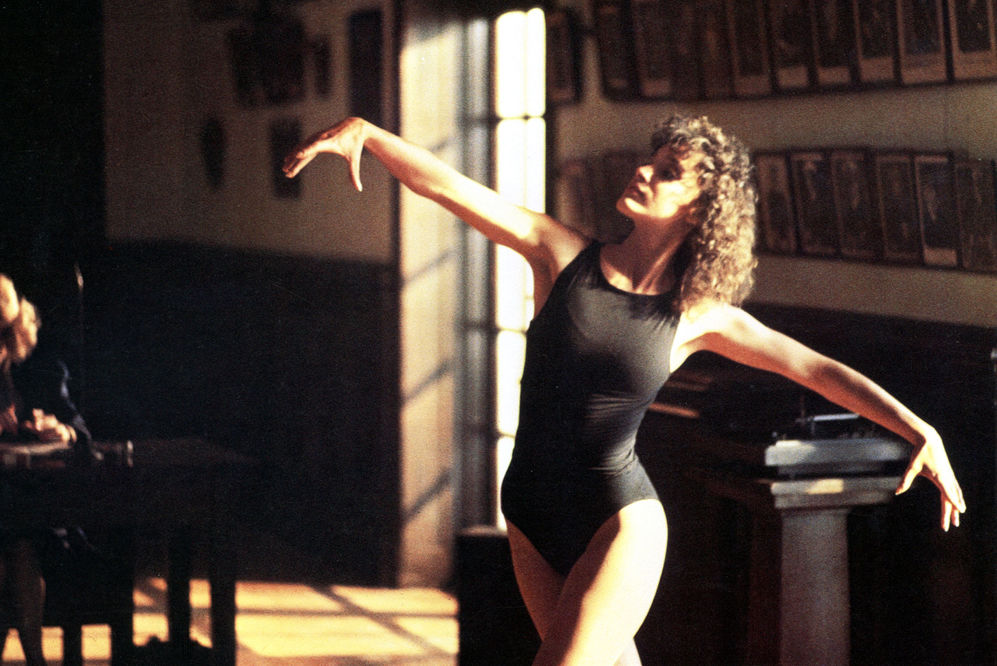
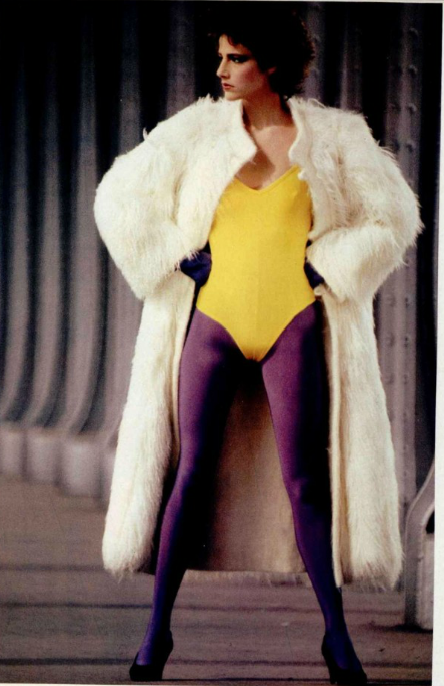
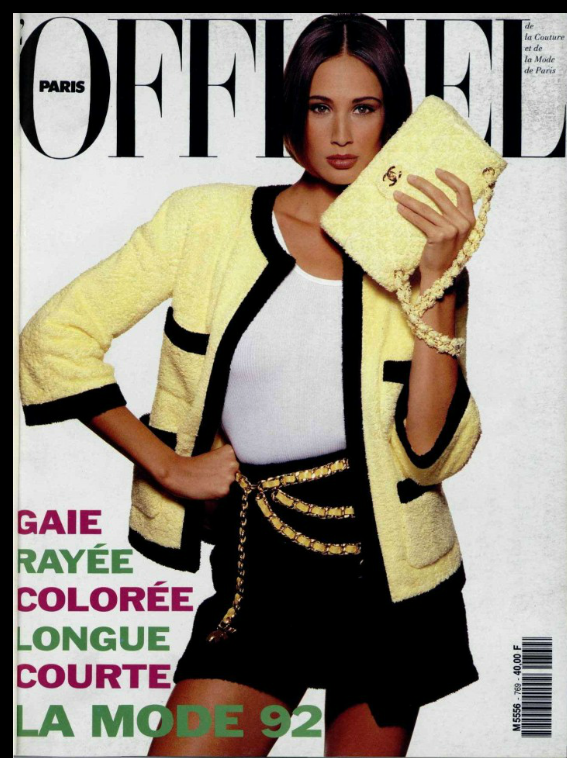
Its original charm (sometimes lost throughout the fashion industry’s various declinations) remains intact with Repetto’s models created for ballerinas.
The classical dance leotard is useful and sexy, it hugs your body, flattens your stomach and enhances your chest without being vulgar, all while revealing the delicacy and tonicity of your movements.